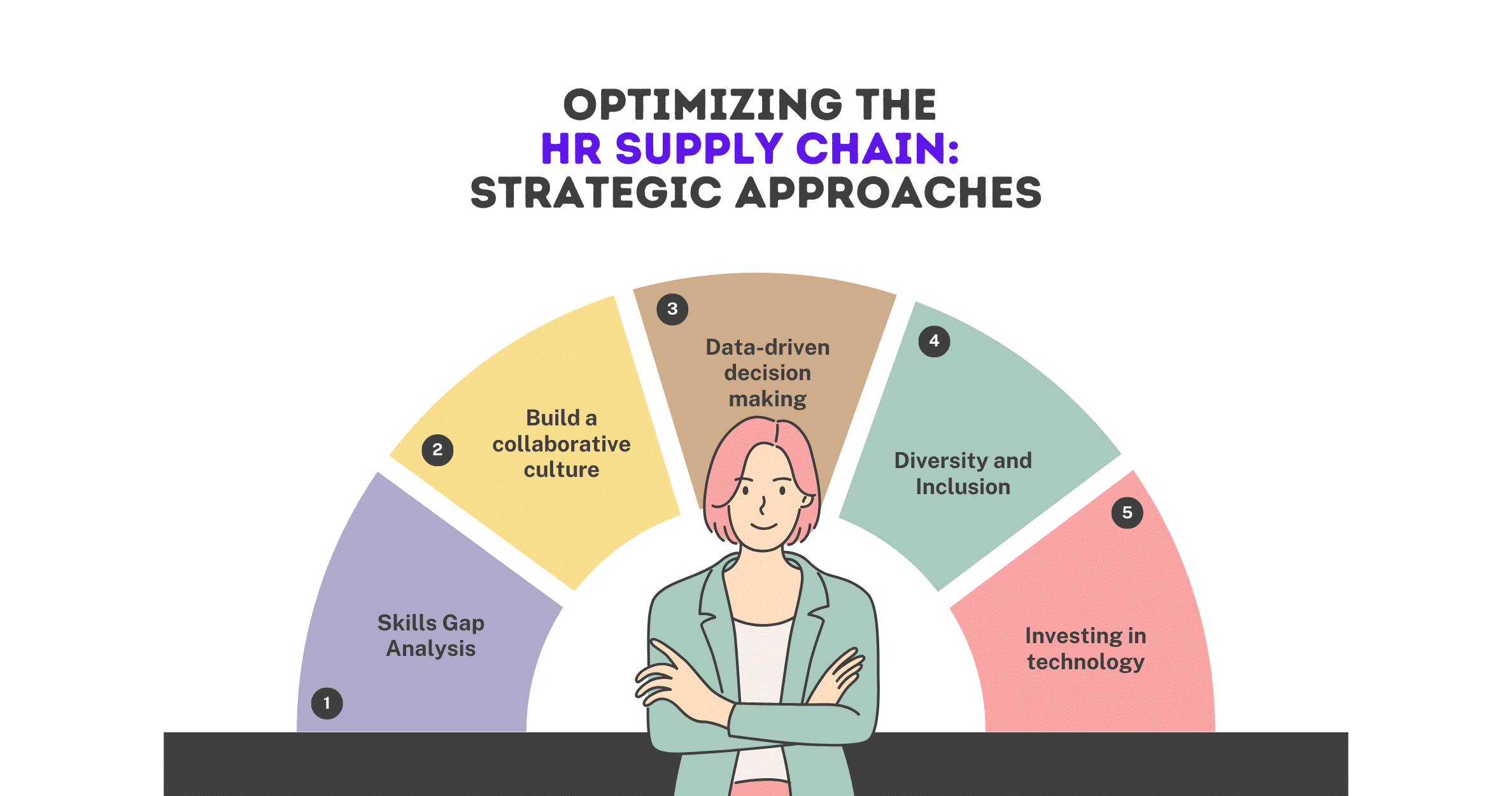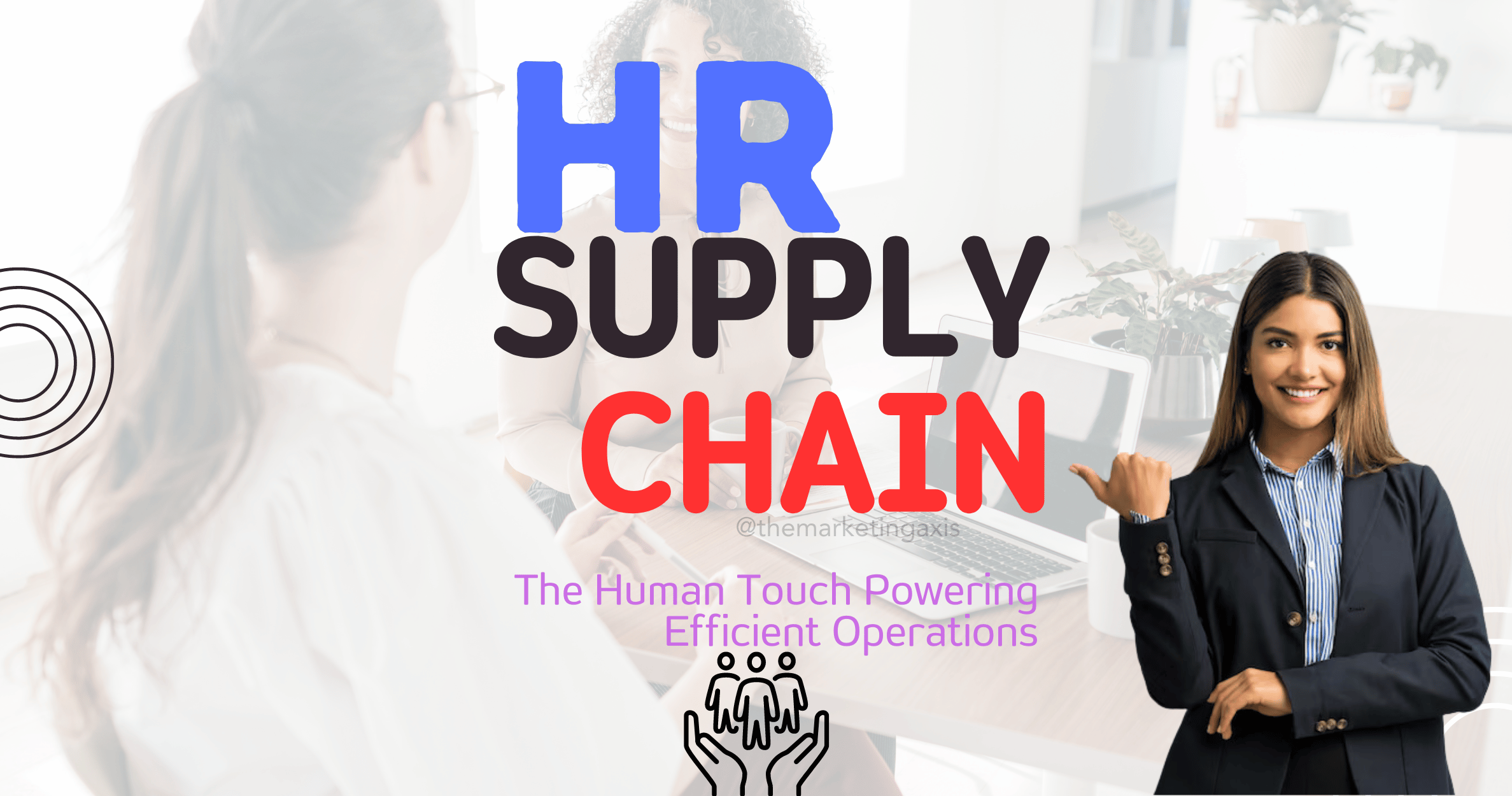The modern supply chain is an amazement of interconnecting processes that flow seamlessly, moving goods across vast distances. The role of technology and logistics cannot be denied, but rarely do people ever consider what perhaps is the most responsible for making this system work: the human factor. Behind every well-functioning HR supply chain strategy is the invisible hand that guides workforces and ensures that the operation flows smoothly while being successful.
HR and the Supply Chain: A Symbiotic Relationship
Historically, HR might not have had a seat at the table on supply chain operations. Given today’s competitive landscape in business, however, the human factor is outsized when it comes to the performance of best-in-class SC organizations. The HR supply chain acts as a bridge to ensure alignment between talent acquisition and development and those SC needs. More specifically:
A Skilled Supply Chain Workforce:
The basic role of HR professionals is to seek and attract qualified people to positions like logistic coordinators, warehouse managers, and procurement specialists. HR does more than fill open positions; the department develops talent pipelines and supports training programs that equip workers with state-of-the-art technologies and superior supply chain management tools. Individuals with the proper skills make fewer mistakes and are therefore more productive.
Motivating and Engaging Employees:
Employees should motivate and engage to lead to profitable entities. This involvement benefits HR by lowering the number of staff who quit their jobs thereby enhancing production. The most important for procurement workers who might grow weary after working for many hours and doing more difficult assignments. Employees need to perceive themselves as valuable and doing something worthwhile as they work, here HR plays a critical role in creating an environment where such values are upheld.
Workforce Planning and Scheduling:
Making sure there is enough staff to handle the supply chain from receiving and storing the inventory, all the way through picking, packing, and shipping, becomes it is another crucial HR function. This will involve effective workforce planning and scheduling to match the ebbs and flows of staff numbers with demand. It analyzes data and forecasts to ensure the proper crew sizes throughout the SC process.
Performance Management and Compensation:
HR implements performance management systems to trace employee contributions and highlight areas for improvement. Such data-driven methods bring better decision-making, effective allocation of resources, and a fair compensation structure. By recognizing and rewarding strong performance, HR motivates productivity and a culture of continuous improvement within the supply chain team.
Safety and Compliance:
An extremely safe working condition in supply chain organizations is guided by human resource management. This may involve training staff on safety concerns before they commence their jobs and creating awareness among them on safety measures they should take while working. Likewise, the department also helps the organization abide by labor laws governing the workforce in SC. Similarly, it reduces the chances of facing any lawsuits or penalties which may arise from noncompliance with these regulations.
Optimizing the HR Supply Chain: Strategic Approaches
This can be achieved by emulating some strategic HR practices down the chain to activate the human element in securing appreciable benefits. Following are some specific strategies for optimizing the HR supply chain:

Skills Gap Analysis:
To perform the first step in understanding the skills requirements, HR can cooperate with leaders in pairing the right skills to positions. Here, through detailed skills gap analysis, HR may focus on training programs to address any identified differences. Likewise, it may focus on equipping workers with appropriate experience to enable them to perform their best in their various jobs.
Build a collaborative culture:
Different departments in the supply chain are dependent on each other’s work. So, a high degree of collaboration is required. HR can facilitate team-building and cross-functional communication programs to help build a collaborative environment in the organization. So, it promotes them in a sense of common purpose and encourages cohesiveness among employees along the SC.
Data-driven decision making:
Valuable insights into the SC workforce are held by HR data. By examining trends in the absence of workers, staff turnover, and actual job performance, it is possible to identify weak areas. In this way, after optimizing staff numbers based on data analysis of trends in HR records such as staff absence rates or quit statistics, management could also identify training gaps as well putting place specific measures aimed at solving poor performance problems within the organization.
Diversity and Inclusion:
Different forms of viewpoint can be gathered by having a varied workforce characterized by including people from all walks of life. There would be a more creative and flexible workforce in a SC with fewer challenges when the chain becomes more varied and inclusive by way of human resources-related activities, which also helps in coming up with new solutions to complicated problems without realizing it sometimes giving an edge over others in today’s changing world of business.
Investing in technology:
Technology is a tool that helps to strengthen the Human Resource role in the supply chain. When HR activities like payroll management and scheduling are made easier, then it implies that they would focus better on strategic initiatives that influence directly the chain system. Besides, aligning Human Resource systems with SC management applications brings efficiency to operations while promoting teamwork along the entire value chain.
Benefits of a Strong HR-Supply Chain Partnership
A strong partnership between HR and supply chain management can lead to significant benefits for organizations:
Increased Efficiency and Productivity:
Improved efficiency and productivity come with a skilled and motivated workforce having access to appropriate tools. This means lower mistakes in orders are directly proportional to quicker order processing times, and greater customer fulfillment.
Decreased Costs:
Some of the few that would reap greater cost savings throughout supply chains include lower turnover basic rates, enhanced safety records, and improved decision-making from data analysis. With lesser errors and staffing levels in the right proportion, HR can have fewer operational costs touching the SC.
Enhanced Agility and Adaptability:
The present business scenario is dynamic and continuous. The SC is also required to be dynamic and nimble to steer across these tides of change. The SC is ably handled, and assisted by flexible, competent workers who are taken care of by strategic HR practices regarding eventual disturbances. This helps the SC to properly flex and react to unanticipated disturbances, like material scarcities or market trends. That is how competition is ensured through the smooth run of goods within the firm.
Higher satisfaction of customers:
When a supply chain is properly managed then there are timely deliveries, accurate orders, and therefore higher customer satisfaction. To meet expectations generated by customers and ensure that they stick with the business on a long-term basis, the human resource department should have well-trained employees and effective ones.
Competitive Advantage:
In this regard, the strategic management of HR within the supply chain becomes very instrumental in creating a wide competitive advantage for a corporation. A more efficient, cost-effective, and customer-centric HR supply chain provides an opportunity for businesses to outperform their competitors.
Conclusion
Success in the modern supply chain is much more than logistics and technology. It is about Assembling, Developing, and Motivating the human—Workforce behind this system that keeps it running. Integrate strategic HR practices into your organization with a strong and close linking of the people function to the SC management to unlock all the potential of human resources toward great efficiency, cost-effectiveness, and customer satisfaction. Through HR analytics, companies can foster a culture of continuous improvement and maintain a competitive advantage in today’s globalized market. Firms will need to establish a tight linkage at the HR supply chain level in order to navigate complexities and ensure long-term sustainability, as the SC continually evolves in its nature.
HR in Supply Chain Management: Frequently Asked Questions
1. How can HR help the supply chain?
HR plays a critical role in ensuring a smooth-flowing and successful supply chain by:
- Building a skilled workforce
- Promoting employee engagement
- Optimizing workforce planning and scheduling
- Developing performance management systems
- Promoting safety and compliance
2. How do HR professionals work with supply chain management?
HR professionals team up with the leaders in supply chain to understand better their unique workforce needs. This collaboration of information provides HR with data to develop training programs applicable to their specified field, effective recruitment against the various job needs, and optimal staffing levels to secure a smoothly functioning SC.
For instance, human resources could interpret data regarding seasonal spikes in demand and help managers of SCs develop flexible staffing plans to scale up for peak periods without overly increasing costs.
3. What are the core business functions of HR in supply chain management?
The core business functions of HR in supply chain management are:
- Talent Acquisition and Development
- Workforce Planning and Scheduling
- Performance Management and Compensation
- Safety and Compliance
4. What is the role of HR in supply chain management?
The role played by HR in supply chain management is ensuring that the human element functions optimally. It is, therefore, a strategic partnership toward the attraction and development of the motivation of an efficient and skilled workforce to manage all aspects of the SC efficiently.
HR builds an integral, engaged workforce to drive some of the major objectives as related to the supply chain: increased efficiency, reduced costs, and improved customer satisfaction.
5. How does HR fit into supply chain management?
Human resources have a role in supply chain management regarding the human resources that drive through the entire system. In this regard, they go beyond traditional human resource roles such as recruitment and payroll and work alongside supply chain leaders to develop strategies that optimize the workforce.




